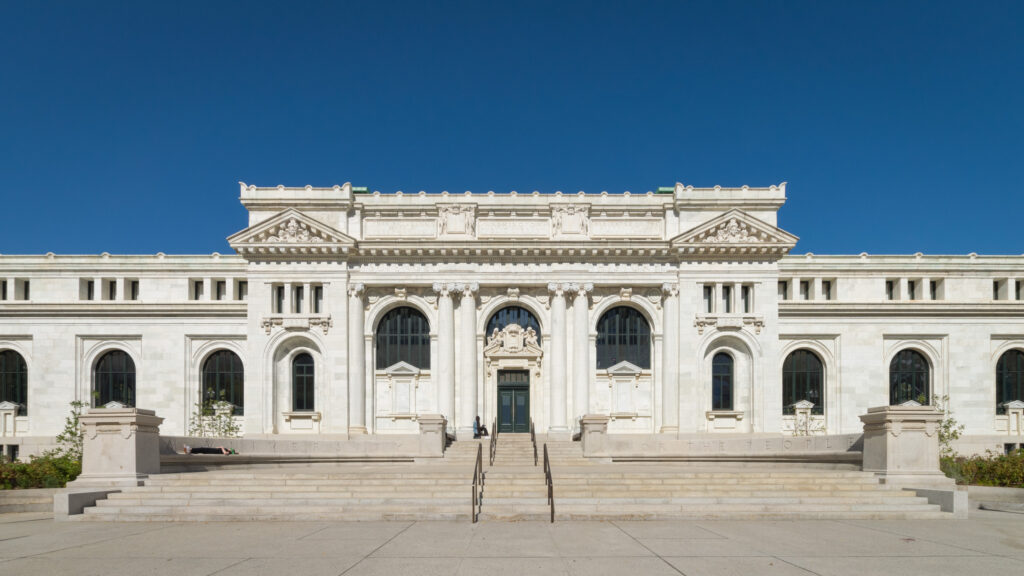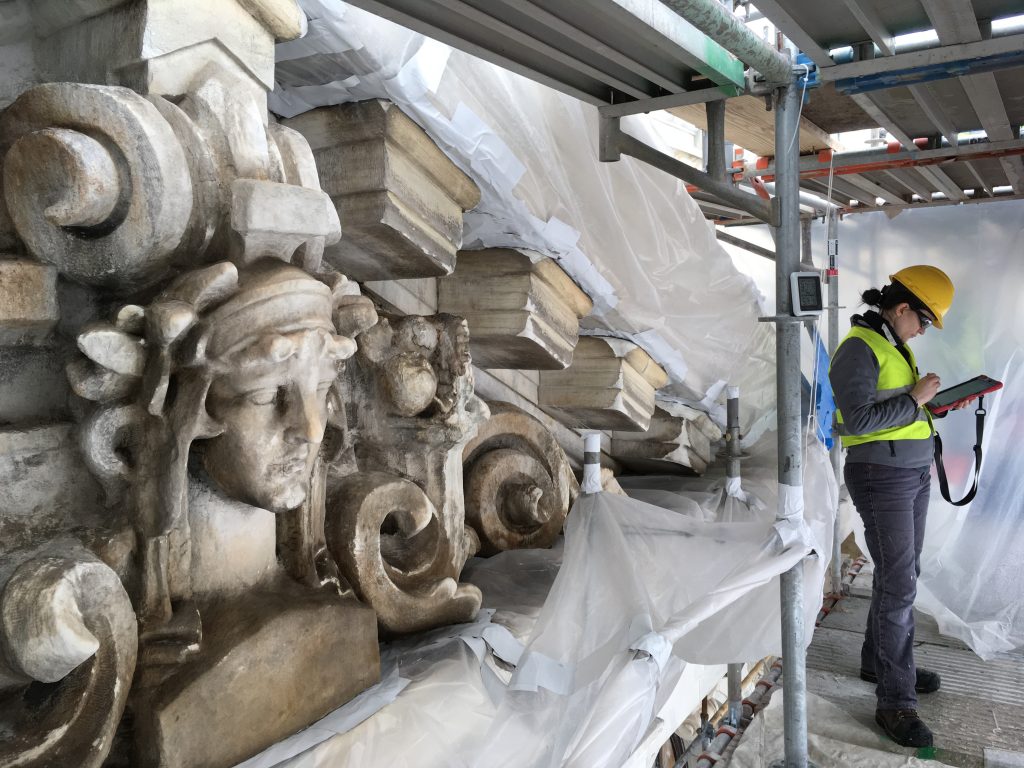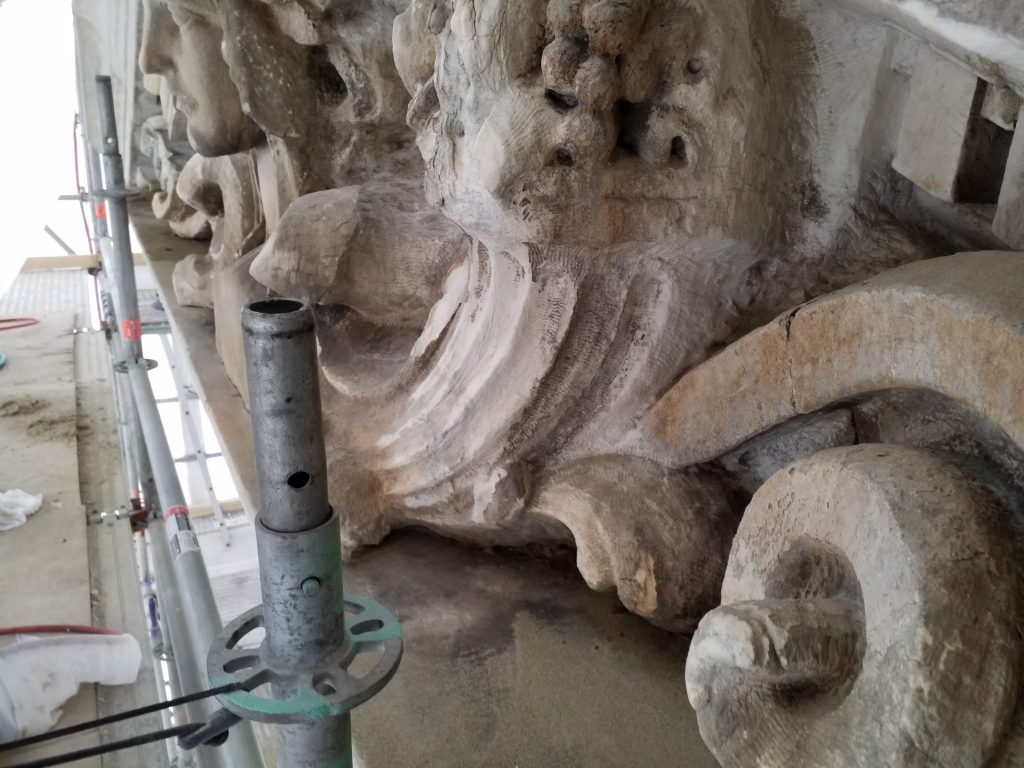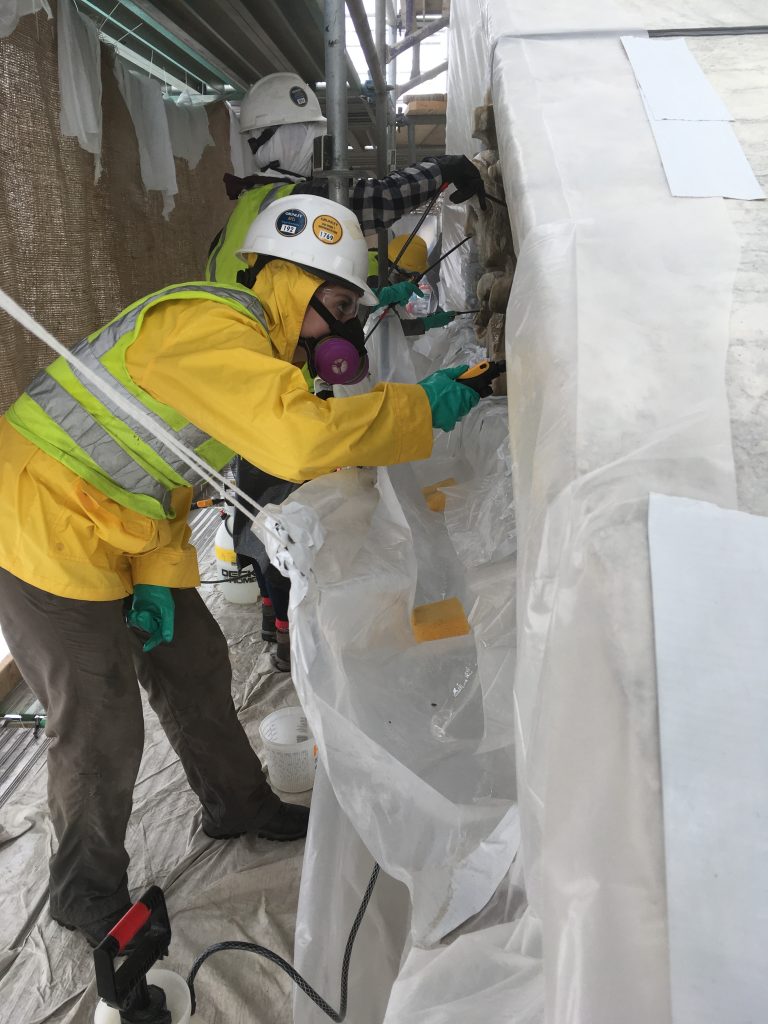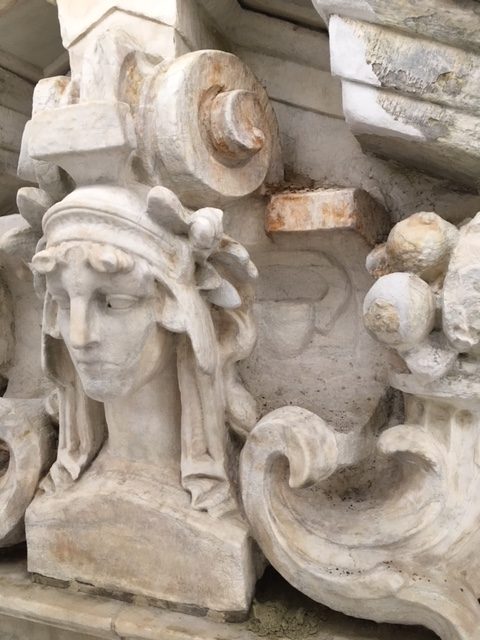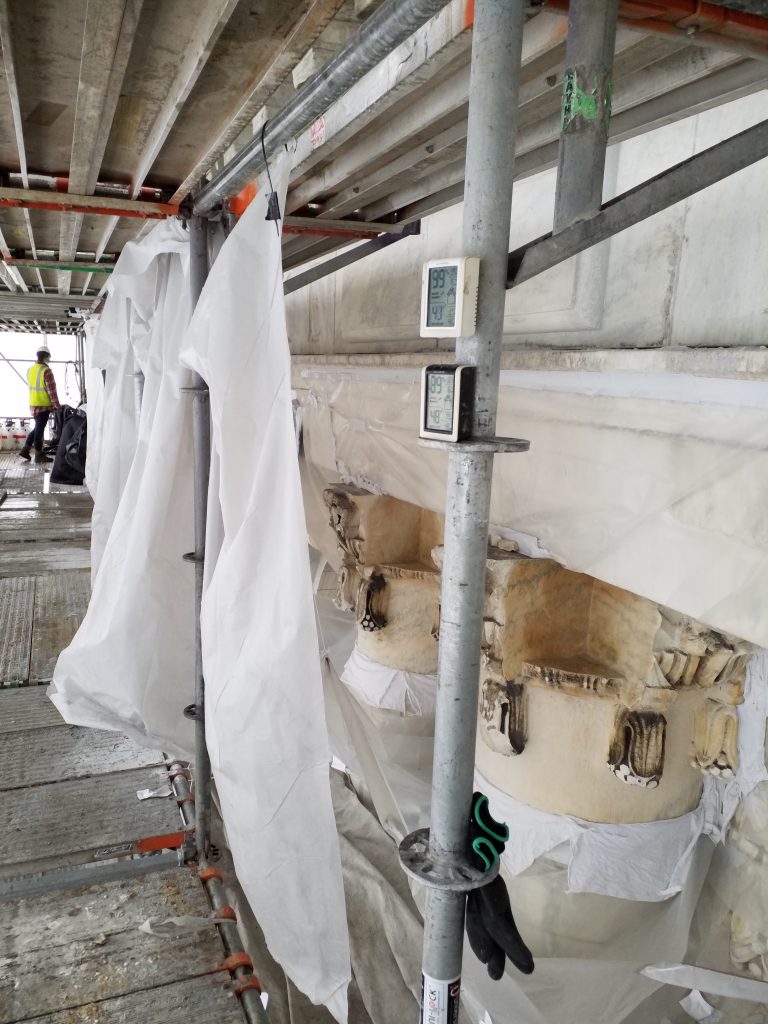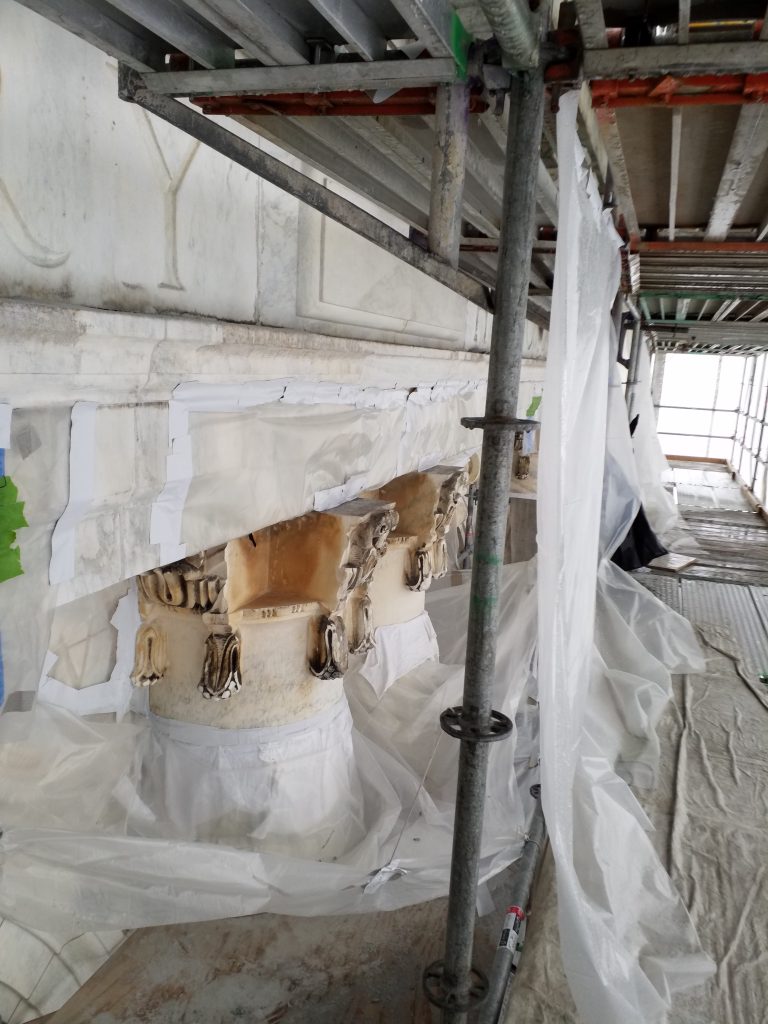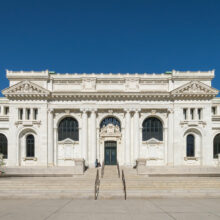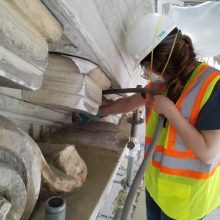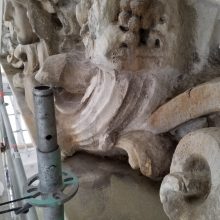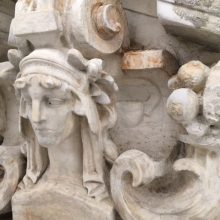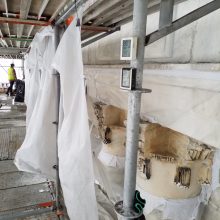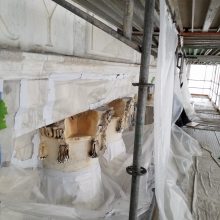Carnegie Library Façade Restoration
Constructed in the Beaux-Arts style on Mount Vernon Square, the Carnegie library was constructed in 1899-1902 through funds provided by venture capitalist and philanthropist Andrew Carnegie. Designed by Albert Randolph Ross of Ackerman & Ross, the building design reflects turn-of the century library planning. Originally the Central Public Library for Washington D.C., the building most recently served as event space for Events DC and a research library and exhibition space for the Historical Society of Washington, D.C. Despite its status as a historically designated building, it has remained functionally vacant for the last 45 years.
The building recently underwent a major restoration campaign. The new tenant, Apple Inc., has assumed responsibility as the new stewards of the building’s interior as well as exterior. Apple made curatorial choices on selecting areas (i.e. modillions, dentils, and pediments) of the building to preserve, conserve, and/ or restore. EverGreene performed a conditions assessment of the exterior stone from the ground and from a lift. Treatments were recommended for the restoration of the exterior stone based on this assessment. The tenant was committed to conserving the historic exterior building materials.
EverGreene determined the best methods and care to the historic exterior and interior finishes. Our conservators provided guidance to support the sustained use of the library building through assessments and surface treatments. Beginning in March of 2018 conservators and trained technicians addressed the existing deterioration in order to delay future loss of the exterior stone. Our conservation and restoration treatments were focused on the south elevation sculptural elements. Our treatment was tested on the stone from Carnegie Library and has also previously proven effective on the New York Public Library (NYPL) building stone of the same period. After the cleaning and consolidation, were repaired with crack injections, patching mortar, and shelter coating as part of a long-term maintenance campaign.

